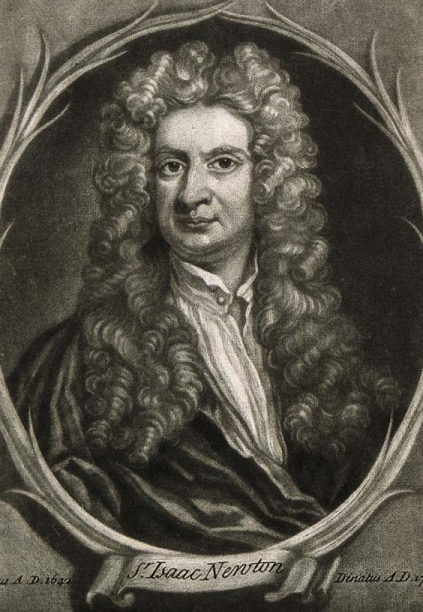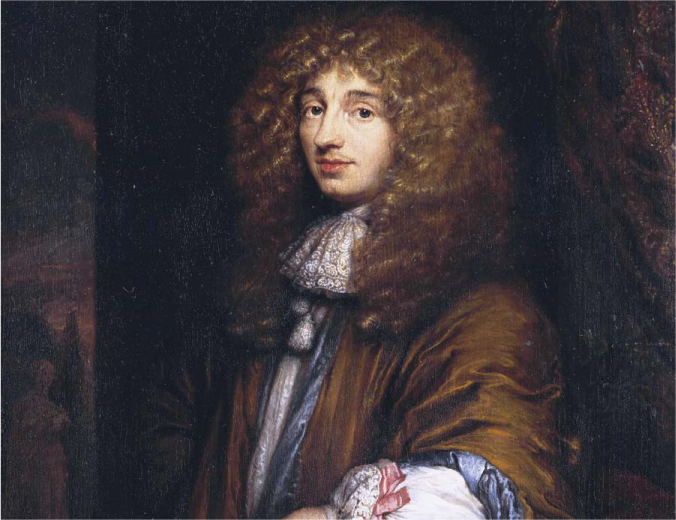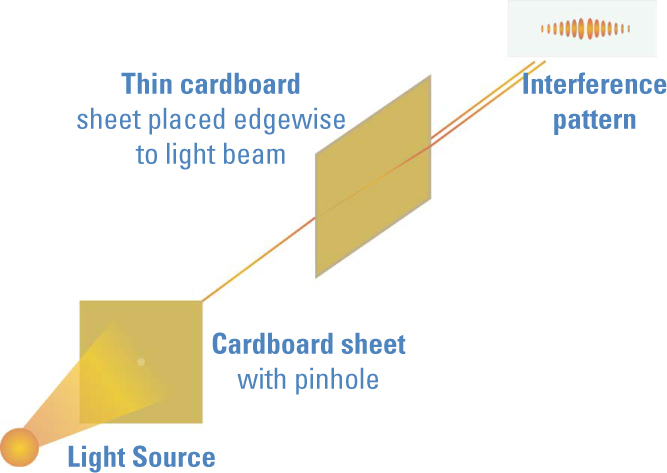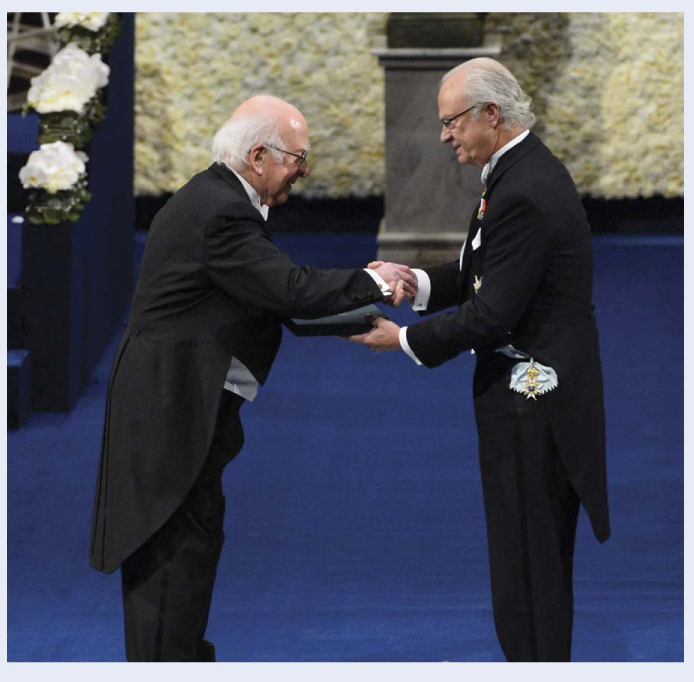Our planet is full of life because it is full of light. Plants use the energy of sunlight to grow, and plants provide food for animals. Humans and many animals use their sense of sight to find their way in the world.
But what is light? That simple question has driven human curiosity throughout history. No question in science has led to more discoveries. It has led not only to understanding that important form of energy, but also knowledge about the nature of matter and the forces that govern the universe.
Light and Color
Among the first to pursue that question were two seventeenth-century scientists who are considered to be among the most important of their time, or of any time: Sir Isaac Newton (1642–1727) and Christiaan Huygens (1629–1695).
At Cambridge University in England in the mid-1660s, the young Newton made some important observations about color. Until that time, the prevailing scientific view was that white light was pure, and something had to be added to produce color. Though that theory fit with common sense, Newton discovered that it was wrong.
In a darkened room with a hole in the window shade that allowed a sunbeam to enter, Newton took a piece of glass in the shape of a triangular prism and put it in the beam’s path. The light emerged from the prism in a different direction, and it spread out much more than it would have without the prism. More important, when the light struck the opposite wall, it was no longer white. Instead, Newton observed a band of colors from red to violet, like those of a rainbow.
Newton had expected the change of direction (called refraction), since many people had observed that phenomenon when light entered water or glass at an angle. But where did the colors come from? The glass was clear, and furthermore, when sunlight passed through a flat piece of glass, it remained white.

Newton’s Prism Experiments. Through a series of experiments with glass prisms, Sir Isaac Newton discovered that sunlight is a mixture of all the colors that we can see.
Newton investigated by putting a second prism, identical to the first but with its angle reversed, in the path of the refracted light. If the second prism caught the light of all the spread-out colors, then the colors came together and white light emerged. If the second prism captured only one color, then only that color and no other appeared on the other side.

Sir Isaac Newton (1642–1747). Generally regarded as the greatest scientist of his time, Newton studied many physical phenomena, including light and color. He hypothesized that light was a stream of tiny particles that he called corpuscles.
Soon the significance of Newton’s results became clear. White light is not pure, but rather a mixture of all colors from red to violet, which Newton called the spectrum. Today we call it the “visible” spectrum, because we know that the colors that we are able to see are not all the colors that nature has to offer. Beyond the ends of the visible spectrum, sunlight contains infrared and ultraviolet light.
Corpuscles or Waves?
But what is light made of? Because it travels in straight lines and casts sharp shadows, and because its beams reflect from mirrors like a ball bouncing off a hard floor, Newton decided that light must be made of tiny particles, which he called corpuscles.
Across the North Sea in the Netherlands, however, Huygens was more comfortable with the idea that light was a wave. In his mind, the refraction of light was a phenomenon similar to the way ocean waves, heading toward shore, change direction when they cross a submerged sandbar at an angle.
But how can waves cast sharp shadows? Huygens explained that if the wavelength—the distance from one crest to the next—is much smaller than the object the waves are passing, its shadow will be sharp. For instance, when ocean waves approach a very large ship from one side, there is a calm region on the opposite side. The larger the ship or the closer together the crests, the farther the calm region extends. In other words, the shadow is sharper since the waves don’t fill it in as much.

Christiaan Huygens (1629–1695). Huygens’s study of light led him to a different conclusion than that by Newton. He described light as a wave with its peaks and valleys so close together that it could cast sharp shadows.
Refraction of Particles
To understand how a stream of corpuscles or particles can refract, try this project. Take a wide piece of stiff cardboard, such as a poster board, and support one end of it on a few books so it becomes a ramp leading down to a hard floor.
Now take a marble or a similarly sized hard, small ball and roll it down the ramp, not straight along the center but at an angle. When the ball crosses from the ramp to the floor, notice that it changes direction.
A similar change in direction takes place when light passes from air to glass or water, an effect you may have discovered for yourself if you ever dove into a swimming pool to pick up an object at the bottom, only to discover that your target is not where you originally saw it.
So Huygens proposed that light is made of waves with wavelengths that were too small too detect, while Newton spoke of undetectable tiny corpuscles. Both theories could explain all known properties of light at that time, and both men were long dead before anyone came up with an experiment that might settle the wave-particle question for good. That experiment took place in 1801, and the person who performed it was English physicist Thomas Young (1773—1829). Young created a narrow sunbeam by passing sunlight through a pinhole. He then split the beam in two with a piece of thin cardboard placed edgewise. Instead of casting a sharp, thin shadow, as would be expected if the card had divided a stream of particles, the split beam produced a series of light and dark bands—an effect called interference. Interference occurs when waves meet. Where two peaks or two troughs meet, the result is a higher peak or deeper trough, which corresponds to brighter light. Where a peak meets a trough, they cancel each other, which results in darkness.

Young’s Experiment. In 1801, Thomas Young demonstrated the wave nature of light in a famous experiment. He split a narrow beam of light and allowed its two parts to come together. The result was not two spots as would be expected from a beam of particles, but rather a series of bands called an interference pattern, which would be expected from the meeting of two waves.
Young’s experiment proved once and for all that light was a wave phenomenon—or so scientists thought at the time. But that discovery opened up new questions. A particle might travel through empty space, but surely a wave needs a “medium” to wiggle in, scientists thought. So they invented something called the “aether,” and they concluded that it filled all space, even though it had never been detected. (If you’re having trouble imagining what the aether might be like, don’t worry. It turns out that light waves don’t need anything to wiggle in—the aether doesn’t exist. That explains why scientists could never detect it.)
Maxwell’s Mathematics
One physicist who believed in the aether was James Clerk Maxwell (18311879). In 1856, he began his career as a professor at Marischal College in the city of Aberdeen in his native Scotland. Mathematical by nature, he began researching ways to describe electricity, magnetism, and the relationships between the two in mathematical terms.

James Clerk Maxwell (1831–1879). In four famous equations, Maxwell described electricity and magnetism as interrelated fields. His mathematics predicted electromagnetic waves that traveled through space at a speed that matched the measured speed of light.
Though his work in Aberdeen showed promise, his ideas did not come together fully until soon after he moved to King’s College in London in 1860. By 1861, he had written down a set of four equations that are now among the most famous in science.
Not only did Maxwell’s equations describe the relationships between electric and magnetic fields, they also paid an unexpected dividend. They suggested that a wave of electromagnetism could travel through space and even produced a formula for what the speed of such a wave would be. Astonishingly, that speed was almost exactly the same as the recently measured speed of light. Thanks to Maxwell’s work, physicists now knew not only that light was a wave phenomenon as shown by Young’s experiment—but they also believed they knew what kind of a wave it was. The aether, even though it had never been observed in any way, carried both electricity and magnetism. Or did it? Though Maxwell’s writings described his view that electromagnetic waves traveled through the aether, his equations did not include anything that described the properties of that mysterious whatever-it-was.
Some physicists saw something in Maxwell’s equations that Maxwell himself did not. Or perhaps it is better to say that they saw nothing where Maxwell assumed that something was needed. They argued that electric and magnetic fields could satisfy Maxwell’s equations without the aether or anything else to support them—so why invent something that no one can detect? They were right, but it took more than forty years of scientific progress until the famous theory of relativity ended the discussion in 1905.
Even if physicists disagreed about whether the aether existed, they no longer argued about the nature of light. Sixty years earlier, as the nineteenth century began, Young had demonstrated the truth of Huygens’s theory of light as a wave phenomenon. Now Maxwell’s mathematics had shown that those waves were electromagnetic.
The case was apparently closed. Huygens had been right and Newton had been wrong. It was time to move ahead—to learn more about the way matter and electromagnetic waves interact. No one could have ever suspected that in the last year of that century, Newton’s corpuscular theory of light would be reborn in a new form. And that discovery would lead to a new understanding not only of light but also of matter itself.
A Modern Aether
One of the most important recent discoveries in physics was the detection of the subatomic particle called the Higgs boson. In 1964, several scientists, including Peter Higgs, published papers in scientific journals that described how subatomic particles get their masses.
By then, scientists had discovered an entire “zoo” of subatomic particles. Many of these appeared to be quite similar to each other but with different masses. They also had developed theories of the basic forces of nature based on exchanging a type of particle called a boson. For example, the electromagnetic force between two particles results from their exchanging photons with each other. Each basic force has its own basic field and its own type of boson.
Higgs and the others proposed that particles acquire their masses by exchanging bosons through a mass-giving field that fills all space, just like the proposed aether. Because Higgs was the first to mention the particle as well as the field, both came to be named after him.
Unlike the aether, which turned out to be unnecessary to understand electromagnetic waves, the Higgs field was needed to explain the different masses of otherwise similar particles. Detecting the Higgs boson required one of the most complex machines ever devised: the Large Hadron Collider (LHC).
On July 4, 2012, two teams of scientists using different detectors and experiments at the LHC announced that they had discovered a previously unknown particle that had all the properties expected for the Higgs boson. A little more than a year later, the Nobel Prize committee awarded the 2013 Prize for Physics to Higgs and another physicist.

Peter Higgs (left) accepting the 2013 Nobel Prize in Physics. Maxwell and other scientists incorrectly assumed that electromagnetic waves needed a medium called the aether, which filled all space, to carry them. Attempts to detect the aether failed because it does not exist. More than a century later, in 1964, Peter Higgs and other physicists proposed a different kind of “aether” to explain why subatomic particles have different masses. That came to be called the Higgs field and was accompanied by a subatomic particle called the Higgs boson. That particle was discovered in 2012, resulting in a Nobel Prize for Higgs and another physicist.